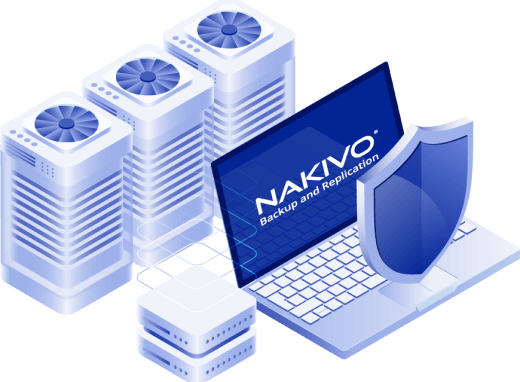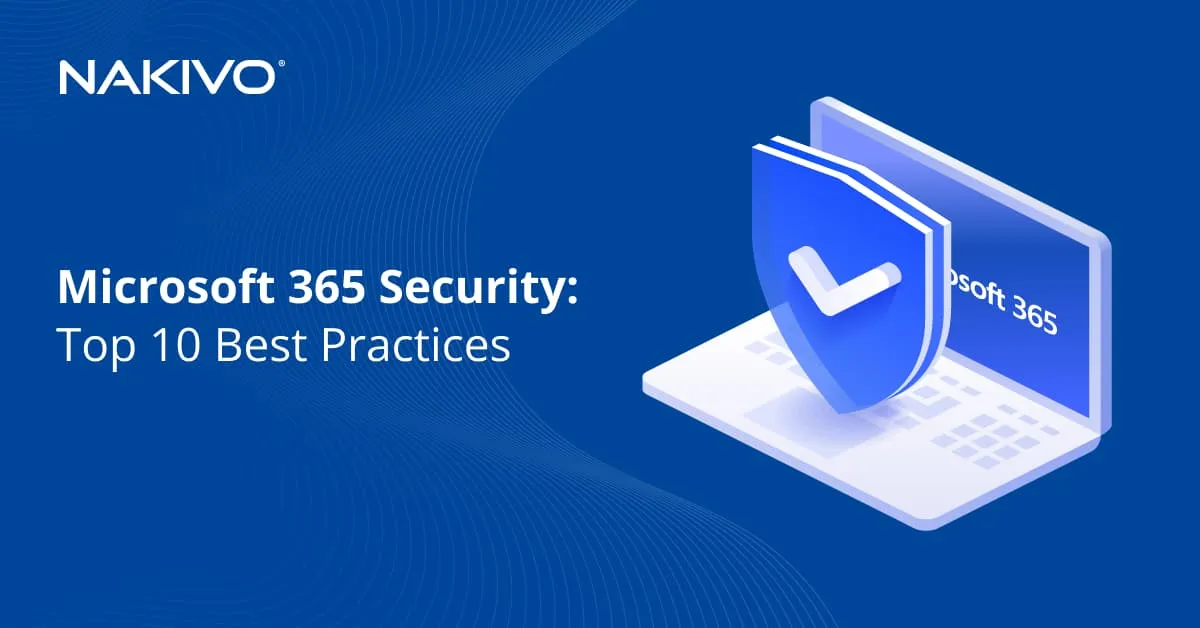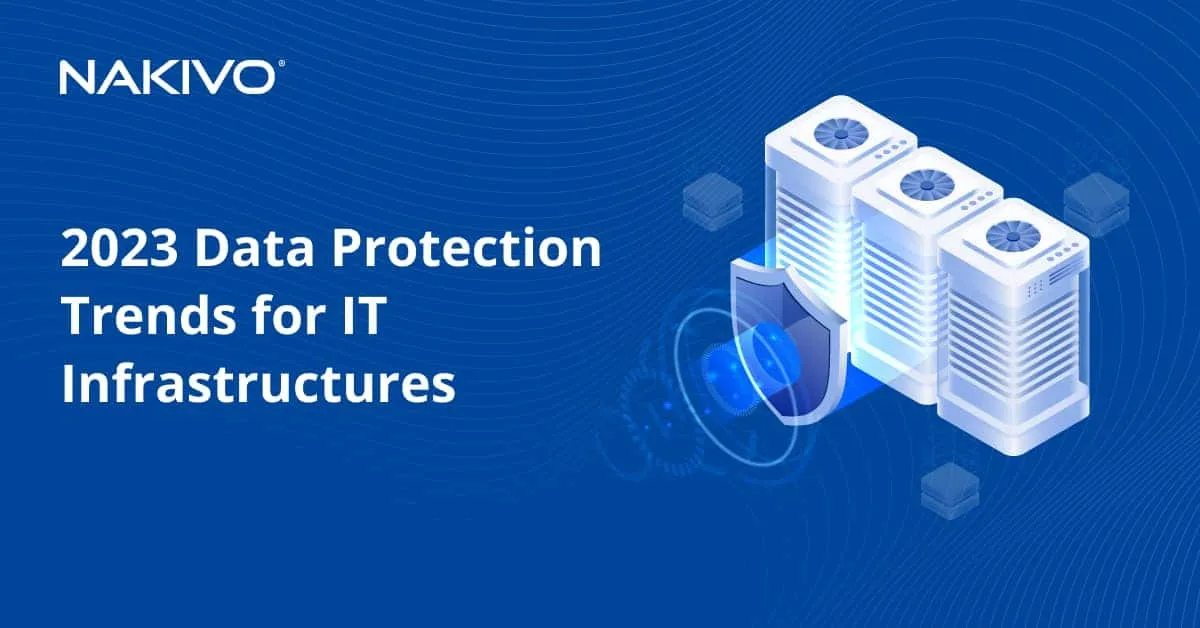Essential Backup and Restore Practices for NAS Data Protection
Network Attached Storage (NAS) systems are integral to modern organizations as they offer centralized, accessible and reliable storage for unstructured business data. Yet these very strengths also make NAS systems vulnerable to an array of risks — from accidental deletion to ransomware attacks.
In recent years, threats like eCh0raix, DeadBolt and Synolocker have been specifically engineered to exploit NAS vulnerabilities. These ransomware strains can bypass weak credentials or exploit unpatched firmware to encrypt entire repositories, leaving organizations locked out of their data.
This post offers a fresh perspective on NAS data protection and blends practical advice with techniques to help you design a NAS backup and recovery strategy that meets today’s challenges and anticipates future risks.
Why You Need NAS Data Protection
NAS systems serve as centralized repositories for critical business data — a role that makes them a prime target for cybercriminals. The growing reliance on NAS backup solutions means that more and more companies can be vulnerable to a multitude of threats that can compromise their data integrity and cause downtime and financial losses.
Common threats to NAS data
- NAS-specific ransomware threats. Cyberattacks are growing more sophisticated, with attackers increasingly targeting vulnerabilities in NAS devices. Cybercriminals exploit these weaknesses to encrypt files and demand a ransom, forcing businesses to scramble to restore data and operations.
- Hardware failures. Despite advancements in storage technology, no hardware is immune to failure, and NAS devices are no exception. Physical damage, wear and tear, manufacturing defects and environmental factors can all contribute to hardware failures.
- Human oversight. Whether accidental deletion or misconfigured backup jobs, human error accounts for the majority of data loss incidents. Accidental deletions, misconfigurations, unauthorized access or simply neglecting to implement proper backup procedures often cause devastating consequences.
- Natural disasters. Unpredictable events like floods, fires, or earthquakes can render local NAS devices inaccessible or irreparable.
Business and compliance implications
- Downtime сosts. Downtime can have a massive financial impact on businesses. This includes lost revenue, decreased productivity and customer dissatisfaction.
- Regulatory fines. Non-compliance with data protection regulations, such as GDPR and HIPAA, can result in hefty fines and legal penalties.
- Reputation damage. Data breaches and loss can erode customer trust. This leads to negative publicity, loss of business and reputational damage. This, in turn, makes it difficult to attract and retain customers.
Best Practices for NAS Data Protection
To achieve optimal data protection for your NAS, we recommend adopting the following best practices.
Implementing redundant systems
For strategic diversification and quick recovery, implement a combination of NAS-to-NAS replication, cloud backups and hybrid redundancy. NAS-to-NAS replication allows real-time duplication of data between two NAS systems, ensuring that critical files remain intact even if one system fails. NAS cloud backup provides an additional layer of safety, protecting data against physical damage caused by local disasters such as fires or floods. A hybrid approach that combines on-premises NAS backups with backup copies stored in the cloud offers the best of both worlds — the speed of local backups and the geographic diversity of offsite copies.
Consider implementing RAID (Redundant Array of Independent Disks) levels for NAS systems too. RAID 1, or mirroring, and RAID 5/6, which use striping with parity, add data redundancy and improve fault tolerance. This means that if a drive fails, your data stays accessible. It’s worth noting that RAID isn’t a replacement for regular backups, but it does significantly boost the resilience of your storage infrastructure.
Encrypt NAS data from the start
Modern NAS devices often come equipped with built-in encryption capabilities. These features handle encryption tasks directly, which frees up the CPU for other operations and protects sensitive information. To maintain security, data should be encrypted the moment it leaves your device, whether destined for local storage or the cloud. Use strong encryption protocols like AES-256 to keep stored data safe. Even if someone gains access to the NAS device, encrypted data remains protected against breaches and leaks.
Audit access to NAS data
Maintaining visibility into NAS backup software through auditing is another cornerstone of effective data protection. Use automated audit logs to track all file activity, including transfers, modifications and access attempts. Implement strong access controls by enforcing user permissions and regularly reviewing access policies to prevent misuse or breaches.
Leverage immutable backups
Immutable backups are a vital component of any robust data protection strategy. Unlike traditional backups, which can be accidentally deleted or overwritten, immutable backups cannot be altered or deleted once they are created. This makes them highly effective against ransomware attacks, which often target backup files.
Keeping NAS backups in a safe, offsite repository can save your data in case of a ransomware attack. If your main NAS system gets hacked, you can use an immutable backup to get your data back up and running – no need to deal with the encrypted files.
Optimizing NAS Data Recovery Processes
Now, let’s look at a few tried-and-true methods to streamline your NAS restore process and mitigate downtime.
Granular recovery options
When data loss occurs, restoring an entire volume is often unnecessary and time-consuming. Granular recovery allows you to retrieve only what you need, whether it is a single file, an application or a folder.
Test recovery workflows regularly
A NAS backup is only as good as its ability to restore data when needed. Regular testing of your backup and restore processes ensures the integrity of your data and validates recovery workflows. Automated testing tools can help by verifying backup functionality without manual intervention.
How NAKIVO Simplifies NAS Backup and Recovery
NAKIVO Backup & Replication is an all-in-one solution for backup, replication, granular restore and disaster recovery across virtual, physical, cloud, NAS and SaaS environments, all managed from a single interface. It offers a comprehensive suite of features designed to address the unique challenges of NAS data protection.
- Incremental backups. NAKIVO’s incremental backup technology ensures that only changed data is captured during backup jobs. This minimizes the strain on production systems, shortens backup windows and conserves network bandwidth. Frequent, incremental backups ensure you always have up-to-date copies of your data.
- Deduplication and compression. Storing multiple backups can eat up storage space quickly. NAKIVO’s global deduplication eliminates duplicate data across all backup jobs, while compression reduces file sizes. Combined, these features can free up to 30x more storage space, which allows organizations to save more backups without needing additional storage capacity.
- Job automation. Managing backups manually is time-consuming and error-prone. NAKIVO automates the entire process — from scheduling backup jobs to verifying their success. You can create custom workflows with pre- and post-job scripts, set automatic alerts for failed jobs and even configure recovery plans. This reduces manual intervention and ensures backups always run as planned.
- Protocol compatibility. Integrate seamlessly with NFS 3.x and SMB 2.x/3.x for versatile NAS backups. This flexibility allows businesses to back up file shares efficiently, regardless of the operating environment or NAS vendor. Compatibility with multiple protocols ensures that businesses can maintain data protection consistency across diverse IT infrastructures.
- Support for multiple platforms. NAKIVO integrates seamlessly with various platforms in your IT ecosystem. It enables you to manage backup and recovery for all environments with one tool, eliminates the need for multiple solutions and simplifies infrastructure management.
Common Mistakes to Avoid in NAS Data Protection
Protecting your NAS requires attention to various potential pitfalls. Here are some of the most common mistakes organizations make and how to avoid them.
Ignoring encryption for NAS data
Unencrypted data is one of the most significant vulnerabilities in any NAS backup strategy. Hackers can exploit this lack of security, exposing sensitive information and resulting in compliance violations or reputational damage. Encrypt your data at every stage, ensuring protection both in transit and at rest. AES-256 encryption and TLS protocols should be non-negotiable for all organizations.
Overlooking regular recovery testing
Backups that are never tested often fail when they are needed most. Simulate recovery scenarios to confirm that your backup processes and systems are reliable. This allows you to verify backup integrity and ensure your team is prepared to act when necessary.
Failing to monitor data growth and backup needs
Businesses often underestimate how quickly their data grows, which leads to storage shortages and underperforming backups. To avoid this, monitor your data growth trends regularly and ensure that your backup solution scales seamlessly. NAKIVO’s Federated Repositories provide scalable storage options to accommodate expanding datasets without compromising performance.
Conclusion
Keeping your NAS systems safe means keeping your business safe. These proven strategies help you create a strong defense against the unexpected. With NAKIVO Backup & Replication, you’re building the foundation of operational resilience.




